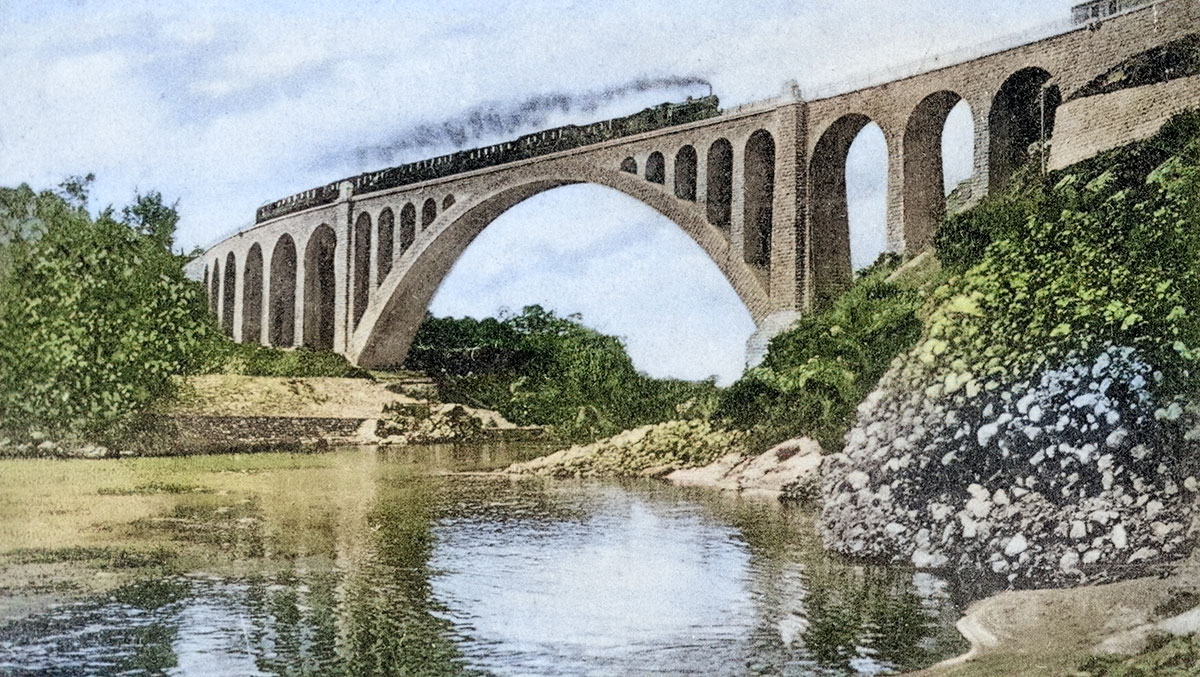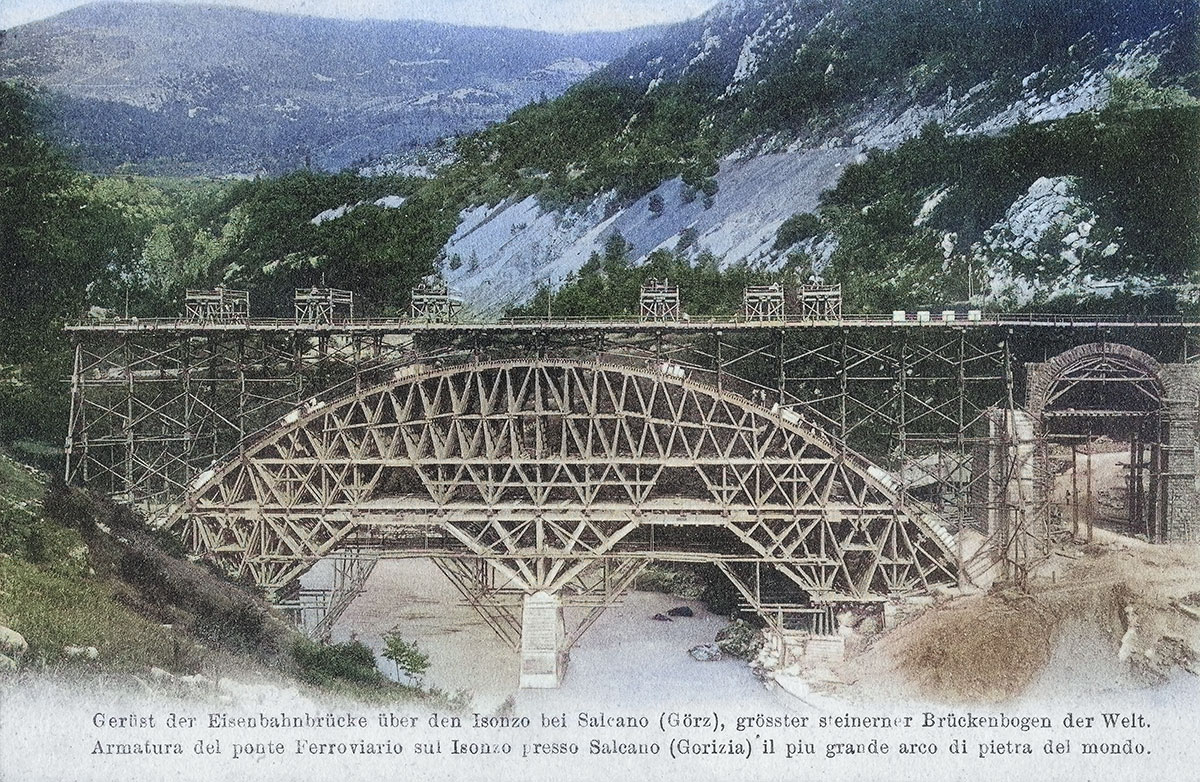BRIDGE WITH THE LARGEST STONE ARCH IN THE WORLD
The Bohinj railway line between Jesenice and Gorizia, with the continuation of the route to Trieste as the main port of the Austro-Hungarian Empire, was inaugurated on 19 July 1906. Part of the connection was represented by the Solkan Bridge, which became an icon of the route due to its construction method, size and beauty. For these reasons, on the day of the inauguration, the imperial train stopped on the bridge with the heir to the throne Franz Ferdinand and many guests who got off the train to view this marvellous piece of engineering, which became famous for the largest stone arch in the world.
 Excerpt from a postcard with the title “Opening of the Bohinj railway on 19 July 1906. Imperial train on the railway bridge in Solkan near Gorizia” (stored by the museum Goriški muzej).
Excerpt from a postcard with the title “Opening of the Bohinj railway on 19 July 1906. Imperial train on the railway bridge in Solkan near Gorizia” (stored by the museum Goriški muzej).
The construction of the bridge began in the spring of 1904, but not without problems. Due to the geologically unsuitable soil on the left bank of the Soča river, the bridge planners had to change the location of the foundation and increase the span of the main arch from the originally planned 80 to 85 meters. It was with this change that the Solkan Bridge attained primacy among stone bridges on a global scale. The most difficult part of the construction was the erection of the large wooden support scaffolding above the Soča river, which was supposed to carry the loads during the installation of the stone blocks of the arch. Due to the planned large span, the scaffolding in the middle of the bridge had to be supported by a pillar. Its construction in the bottom of the Soča river, which shows its torrential character during heavy rains, caused the most problems, as the builders had to use the pneumatic method of foundation in a special concrete caisson to reach the hard bottom of the river, which was located 9 metres below the water level. The total height of the concrete support pillar of the scaffolding was 18 metres, as it had to be placed out of the reach of high water.
The central and at the same time the most demanding element of the bridge was the arch. Its construction began on 1 June 1905. Large and pre-cut stone blocks, weighting from 800 to 2,000 kg, were installed in it. They were made of high-quality and very hard, shell limestone from the Aurisina quarry. The entire 1,960 m3 of carefully carved and numbered blocks were installed in just 18 working days. The stones were laid simultaneously in seven different and symmetrically arranged places, thus achieving an even load on supporting structure. Throughout, the deformation and sagging of the support scaffolding were observed with precise geodetic instruments. At the end of the construction, the measurements showed that the stone arch yielded under its own weight only 5 millimetres, which proves the solidity of its construction.
 Support scaffolding for the construction of the Solkan Bridge across the Soča River. The placement of the first stone blocks can be seen (stored by Gorazd Humar).
Support scaffolding for the construction of the Solkan Bridge across the Soča River. The placement of the first stone blocks can be seen (stored by Gorazd Humar).
Among the finishing works in the construction of the bridge structure was also the installation of a railing in the Secessionist style, which was of two types; a richer and more decorated section with laurel wreaths stood above the main arch, while the simpler type of the railing was placed above the left and right approaches to the bridge.
Immediately after the opening of the Bohinj railway line, there was lively, mainly freight traffic, but only for a good decade. During the First World War, on 9 August 1916, the Austrian engineering units, while retreating from Italian units, blew up the bridge and destroyed its main arch, which collapsed along with the railing into the Soča river. Two years later, in less than two months, a temporary steel structure of the Roth-Waagner type was erected across the Soča river, which allowed traffic on the line again. Nowhere in the world had a larger temporary steel bridge structure been built until then.
In 1925, the Italian Railways began a permanent restoration of the bridge and built a new, slightly thinner stone arch. In August 1927, the Solkan Bridge shone in the form we still know it today. In the Second World War, the bridge was again put to test, as it was hit by an aerial bomb during air raids by the Anglo-American allies that damaged its arch, but it survived the attack. It has been protected as a cultural monument since 1985 and is still considered the bridge with the largest stone arch in the world.